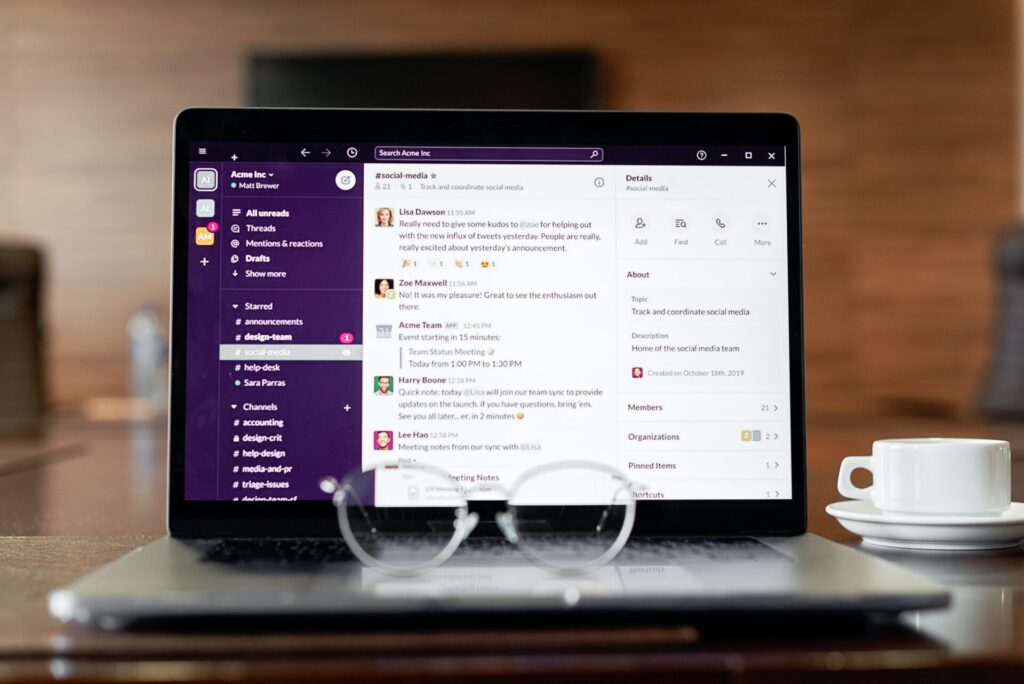Ah, the workplace — where mundane memos and awkward water cooler chats used to reign supreme. But fear not, for the tech wizards have swooped in, waving their digital wands and casting a spell of efficient, dynamic communication across the professional realm.
Over the past 30 years, technology has revolutionized workplace communication, flipping the script and changing the game. Buckle up for a journey through the digital evolution that’s made business communication a breeze.
1. Email: The trailblazing messenger — 1990s

Remember the days of snail mail? Neither do we, thanks to the modern marvel that is email. It’s like a magical pigeon that zips through cyberspace, delivering your messages in the blink of an eye. Invented in 1971 and popularized throughout the 90s and early 2000s, email continues to rule the corporate world.
Here’s how email changed the game:
-
Instant gratification: No more drumming your fingers, waiting for a response. Emails are like lightning bolts of communication, ensuring swift replies.
-
Global collaboration: Colleagues scattered around the globe can now collaborate seamlessly. Attachments, documents, and spreadsheets fly across borders like digital carrier pigeons.
-
Goodbye, snail mail: Traditional mail has been sent packing, reducing the time it takes to exchange vital information.
2. Video conferencing: Bridging continents, one call at a time — 2000s

Let’s face it — international flights for meetings weren’t exactly the epitome of convenience. Enter video conferencing, where the world becomes your conference room.
Free video conferencing platforms, like Skype, started showing up in corporate offices in the 2000s — and really exploded in 2020 thanks to the global pandemic.
-
Globetrotting, virtually: Zoom and Skype have turned time-consuming and costly face-to-face meetings into a thing of the past. Hello, virtual face time!
-
Ecological gold star: Reduced travel means fewer carbon footprints, saving both money and the planet.
-
Business without borders: Collaboration knows no boundaries when video conferencing links you with clients and partners worldwide.
3. Instant messaging: The real-time connectors — 2010s

Face-to-face meetings? So last century. Say hello to instant messaging apps, where real-time communication takes center stage. Apps like Slack, Microsoft Teams, and Google Hangouts are the new VIPs of the digital workplace.
First popularized in the early 2000s, instant messaging in the workplace really took off with dedicated messaging platforms, like Slack, from around 2014.
Move over email, instant messaging has something to say.
-
Real-time magic: No need to wait for office hours – ping your co-workers anytime and get quick responses, no time zone barriers included.
-
Multimedia bonanza: Sharing files, videos, and screen sharing? It’s all part of the package. No need to play guessing games with emails anymore.
-
No more desk chains: Say goodbye to being chained to your desk. These apps set you free to communicate while on the move.
4. Mobile apps: The office in your pocket — late 2010s

Gone are the days of being tethered to your desk. Mobile technology is your ticket to a mobile office. Workplace communication apps are now available on people’s phones and can move with them wherever they are.
Work-related mobile apps, like Notion — launched in 2018, are the new norm.
Remote work revolution: Access crucial emails, documents, and colleagues’ wisdom from anywhere, anytime.
Balancing act: Juggling work and life just became a lot easier. Mobile tech lets you enjoy your morning coffee while nailing that presentation.
24/7 connection: Not just a convenience, but a lifeline. Stay in the loop and make important decisions on the fly.
5. Async video messaging: Lights, camera, collaboration — now
Hold onto your director’s chair, because there’s a new star in the workplace communication scene: async video messaging. Imagine this — you record a video message, send it off, and your recipient watches and responds at their own convenience.
Platforms like Biteable are taking the power of video and prioritizing the benefits of async communication to create a video messaging powerhouse.
Here’s why async video messaging is shaking things up:
-
Memorable, digestible visual storytelling: Forget lengthy emails or chats. With async video messaging, you can craft a compelling narrative, complete with gestures, expressions, and visuals, to get your message across in a more engaging and memorable way.
-
A personal touch, anytime: Async video messaging adds a personal touch that text can’t match. It bridges the gap between face-to-face interactions and written messages, creating a more meaningful connection. Better yet, it defies time zones. Async video messaging lets you communicate effectively without waking up at the crack of dawn or burning the midnight oil.
-
Embracing multitasking: Your recipient can watch your video while grabbing a coffee or reviewing a report – it’s multitasking at its finest. This flexibility can enhance productivity and allow for smoother communication.
Create videos that drive action
Activate your customers or team with impactful, on-brand videos.
Look to the future of workplace communication with Biteable
Whether you’re slinging emails or Zooming across continents, be sure to keep an eye on what tech might be up to next (our guess is it’s something robot-related).
Embrace the future of workplace communication and try async video messages for yourself with a free 7-day Biteable trial.
